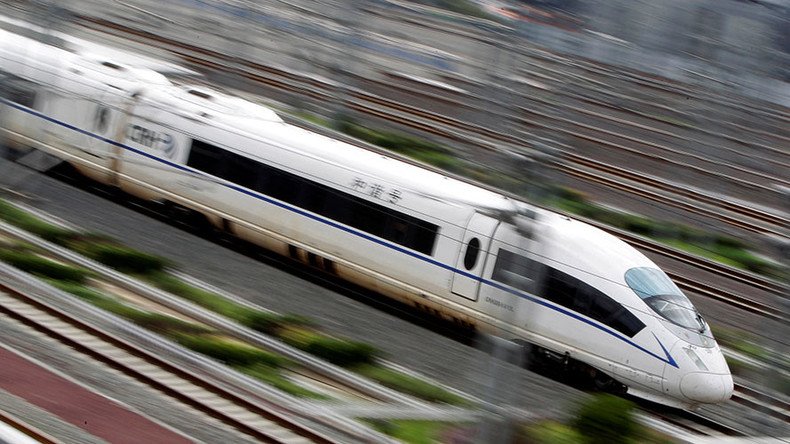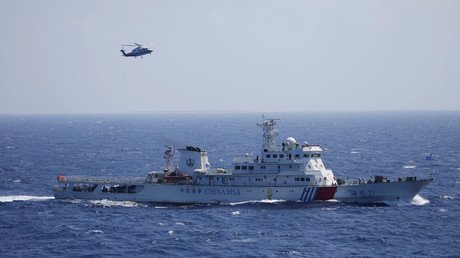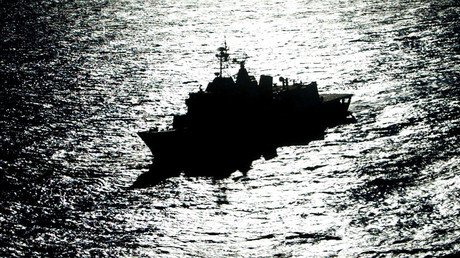Say hello to Southeast Asia’s New Silk Roads

It’s not only China vs. the US in the South China Sea. Few in the West realize that two completely different, intersecting stories are developing in maritime and mainland Southeast Asia.
The Permanent Court of Arbitration in The Hague denied China’s historic rights to waters in the South China Sea within its nine-dash line; it also ruled that the Spratly Islands are not islands, but “rocks”; thus they cannot generate 200-nautical mile exclusive economic zones (EEZs).
These decisions were taken in accordance with the UN Convention on the Law of the Sea (UNCLOS). Now comes the real nitty-gritty – which is a mix of diplomatic ballet and classic Beijing opera.
The framework under which Beijing is ready to negotiate is somewhat detailed here. But the problem at the starting gate is that Beijing stipulates - as a precondition to any negotiation with the Philippines - that The Hague’s decision should not be discussed. Chinese nationalism has been deeply wounded in The Hague, and the Chinese Communist Party (CCP) knows it will be very hard to tame it.
Manila for its part faces a constitutional problem. The Filipino constitution rules that the “state shall protect the nation’s marine wealth in its exclusive economic zone, and reserve its use and enjoyment exclusively to Filipino citizens.” It goes on to say that the state “may enter into co-production, joint venture, or production-sharing agreements with Filipino citizens, or corporations or associations,” but “at least 60 per cent of whose capital is owned by such citizens.” If President Duterte goes against this provision he may be impeached.
Enter the face-saving Asian way of doing business. A graphic example is already at hand; no one so far has urged China to remove people and/or installations from The Hague-coined “low-tide elevations” in the South China Sea.
In practice, Manila will use The Hague’s ruling as a sort of road map – while not insisting Beijing must recognize it. But that implies an extra obstacle: Beijing may still insist on Manila recognizing Chinese sovereignty over a selected bunch of “rocks”. Filipino diplomats actually hope this won’t be the case. If that happens, we’re in business.
The first step in the negotiation should be no sovereignty decision over those “rocks” – including the highly contentious Scarborough shoal. Just like what happened in the 1940s, when the then Republic of China came up with the “nine-dash line”, this should be decided in the future. In the short-term, a deal on fishing within the 12 nautical mile territorial sea around the shoal should be all but inevitable.
Beijing vows 'never to stop' construction in South #China Sea, says it’s lawful https://t.co/7aXwFMXmzhpic.twitter.com/rz6H1YuVh5
— RT (@RT_com) July 19, 2016
This means, in practice, that Beijing will not interfere with Filipino fishermen and/or Filipino oil exploration within its EEZ – while reducing its own workload in those “low-tide elevations”. That’s a tall order, but doable, because the payback will be increased business.
President Duterte knows as much as the Beijing leadership that China is absolutely essential to the development of Filipino infrastructure.
That will open the way to joint Chinese/Filipino
oil exploration. Of course, constitutionally it can’t be an equal share, but China can still get a very good deal in terms of production rights. Not to mention the deal can be expanded to international waters beyond those EEZs, involving other players such as Vietnam and Malaysia.
At the same time, China will not desist from building a first-class blue water navy with global reach. That’s the rationale for the sophisticated submarine base in Hainan Island and those ultra-controversial land reclamations in the Spratly Islands. Beijing’s overall strategy is to fully control security in the South China Sea – considering whatever the hegemon may come up with.
Beijing clearly sees what the US means by “freedom of navigation”; code for the US Navy being able to blockade China’s trade routes in the South China Sea, as I analyzed here. If the US Navy gets too close to China’s southern seaboard, a blockade could be devastating. After all, the whole strategy of setting up Chinese island – or “rock” - defenses in the South China Sea is to keep the US Navy as far away as possible. This is the real deal – much more than fuzzy claims of sovereignty.
And one thing is clear. If the Pentagon goes for the monkey business option, all hell will break loose. The RAND Corporation is already on freak out mode just because the People’s Liberation Army (PLA) Air Force flew the long-range strategic bomber H-6K over those “low-tide elevations”.
Watch the Greater Mekong
One thing is the real high-stakes game being played in the South China Sea. Another thing entirely is Southeast Asian economic integration, via the ASEAN Economic Community – which implies a central strategic role for ASEAN.
The key problem is a real disconnect between mainland and maritime ASEAN. The Philippines and Indonesia are very much focused on South China Sea issues. Cambodia, Laos, Thailand – but also Brunei - lean towards accommodation with China. The others tend to sit on the fence. And then there’s Vietnam as a pivot; with an interest in the South China Sea but not keen on antagonizing China - a next-door neighbor and major trade partner.
It’s mainland Southeast Asia, not maritime Southeast Asia that should be the key driver for regional development in the near future. Some figures tell the story. The Greater Mekong sub-region – which includes the southern Chinese provinces of Yunnan and Guangxi – has more than 400 million people with half of ASEAN’s GDP of $2.5 trillion. Cambodia, Laos, Myanmar, Thailand and Vietnam bear a market of 250 million people and a GDP of $700 billion; even without Vietnam, that’s a GDP of around $500 billion and a market of 150 million people.
They are all expanding like crazy; the Mekong mainland is growing as much as six percent a year. That reminds me, as a comparison, of the early 1980s, when Vietnam was still dreaming of becoming an Asian tiger.
Expansion goes all over the place. The East-West economic corridor – promoted by the Japan-based Asian Development Bank (ADB) – goes from southern Myanmar through central and northwest Thailand and southern Laos all the way to Danang in Vietnam. The North-South corridor goes from Kunming in Yunnan, China to Bangkok and southern Thailand. The southern corridor goes from southern Myanmar to northeast Thailand, Cambodia and Vung Tau in southern Vietnam; road connections in this corridor, also promoted by the ADB, are still relatively incipient, but advancing fast.
#China holds massive naval drills to prepare for 'sudden, cruel & short' modern war (VIDEO) https://t.co/S1NbE1UEddpic.twitter.com/HxMADTO6Fj
— RT (@RT_com) August 2, 2016
Of course there are still myriad problems – related to road construction, border crossings, stifling bureaucracy, the language barrier, internet speed. But that’s the way of the future.
And all that action also ties in with China positioning itself as a de facto high-speed rail power in Southeast Asia. That happens to be a key plank of One Belt, One Road (OBOR); the Southeast Asian branches of the New Silk Roads.
China Railway Group Limited (CREC) is very well positioned to build the Malaysia-Singapore high-speed rail, against Japanese and Korean competition.
The 417 kilometer high-speed rail - stretching between Yunnan province and Vientiane in Laos - is already being built, while the China-Thailand high-speed rail project is also back on track after a few bumps on the financial road. In practice, we’re talking about over 3,000 kilometers of high-speed rail from China’s Yunnan to Laos, Thailand, Malaysia, and Singapore; the Southeast Asian stretch of the New Silk Roads, eventually connected to central China, Central Asia, Southwest Asia – and Europe.
So watch Southeast Asia. The whole show is not only about maritime Southeast Asia – which is a hostage of the complex, conflicting big power China-US relationship; quite a few key geopolitical implications will derive from the development push of the Greater Mekong sub-region - and the progressive integration of mainland Southeast Asia.
The statements, views and opinions expressed in this column are solely those of the author and do not necessarily represent those of RT.















